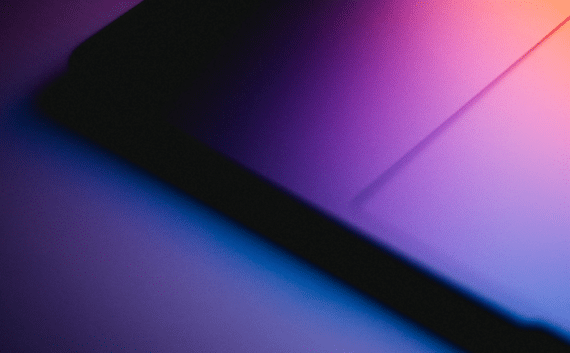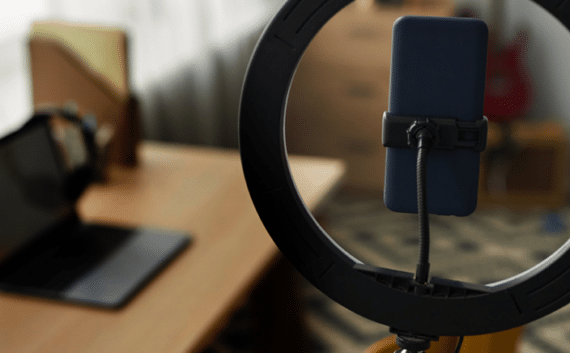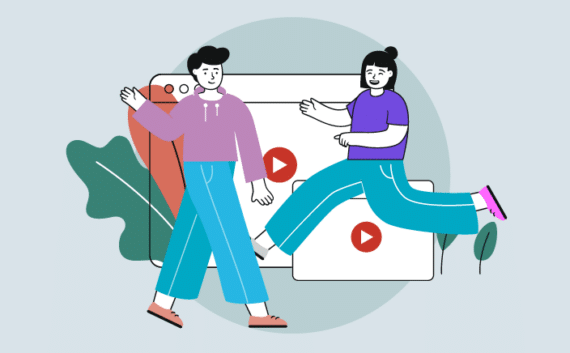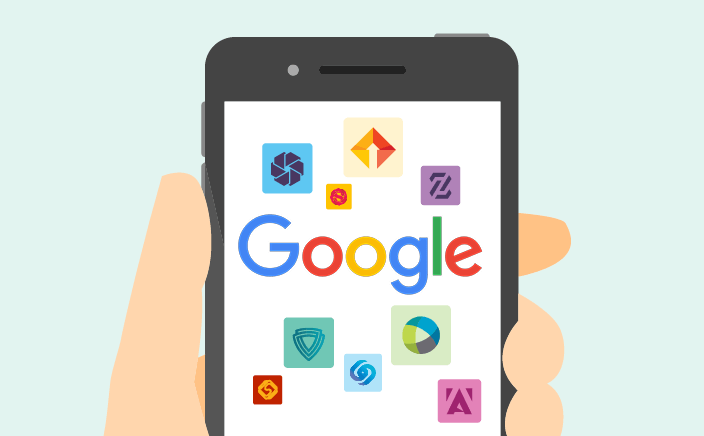
The use of favicons in Google’s search engine results has caused a bit of turbulence amongst digital marketers and brands, but it’s likely that they’re here to stay. So, what does this mean for your brand?
What is a favicon?
Favicons (favourite icons) are the 16x16px graphics that have appeared in our website browsers for years. They’re the little logo icons that are displayed in bookmark tabs, browser tabs and the URL address bar when you search.
How has Google’s search engine results changed?
In May last year, Google rolled out a new design for mobile search results, with domain names displaying more prominently and the addition of favicons, acting like a little bullet point for each listing. Google then announced in January this year that they would be rolling out the design to desktop.
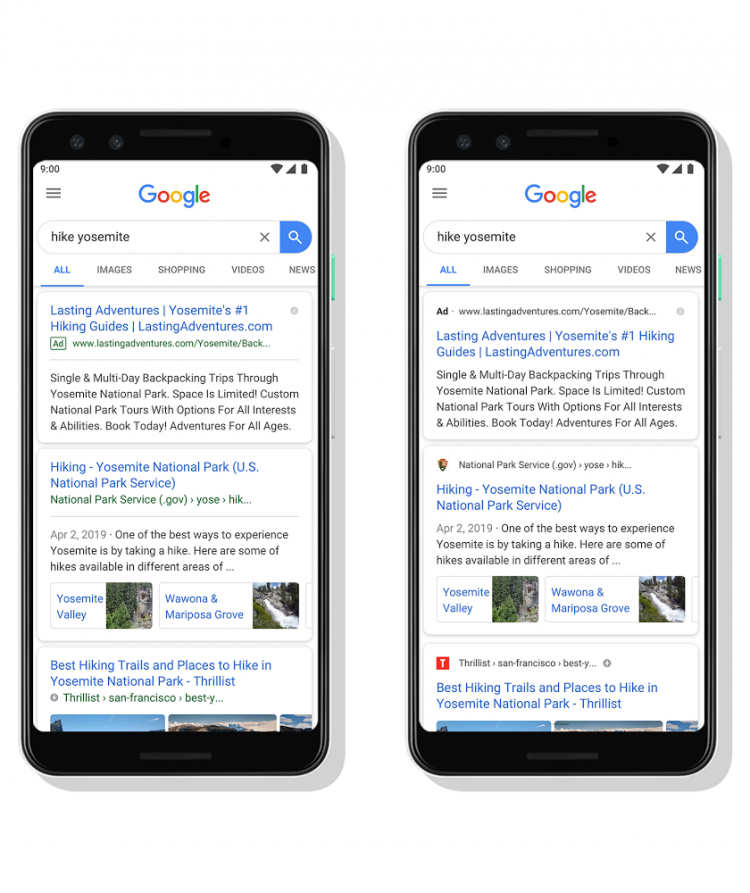
Why did Google change the search engine results design?
The new design intended to improve user experience by increasing brand recognition. By making branding a more prominent feature in search results, users are provided with a visual aid that helps them navigate their search and find their desired result quicker and easier.
Favicons can help users distinguish between brands that share the same name as well as identify which of the listings are for a brand’s website, and not for other directory listings that are relevant to the brand, like a Facebook or LinkedIn page.
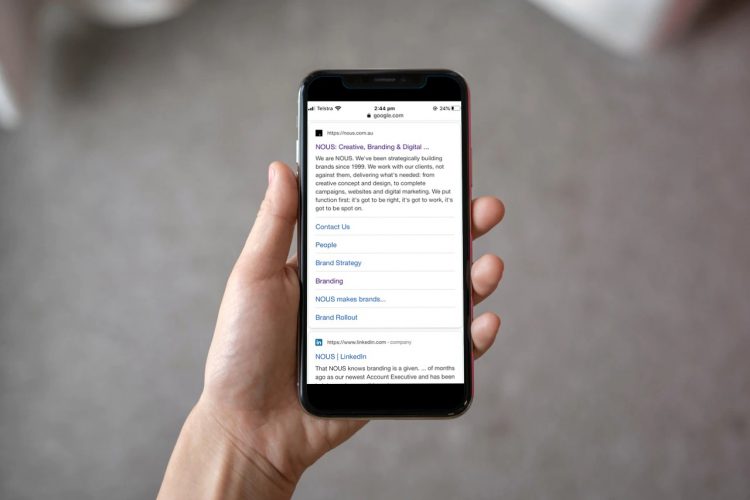
What do people think of the new design?
Despite Google’s statement that the design update had been well received by users, the feedback hasn’t been all good across the web, with many complaints surrounding the use of favicons for ads. This has appeared to some to be an intentional ploy from Google to make paid ads look like organic listings as a means to drive paid ad revenue. However, Google insists that the intention was to improve user experience and make it easier to find where you need to go.
Due to the somewhat mixed user feedback, Google has reverted desktop search results to its original design, but advised that they will continue to experiment.
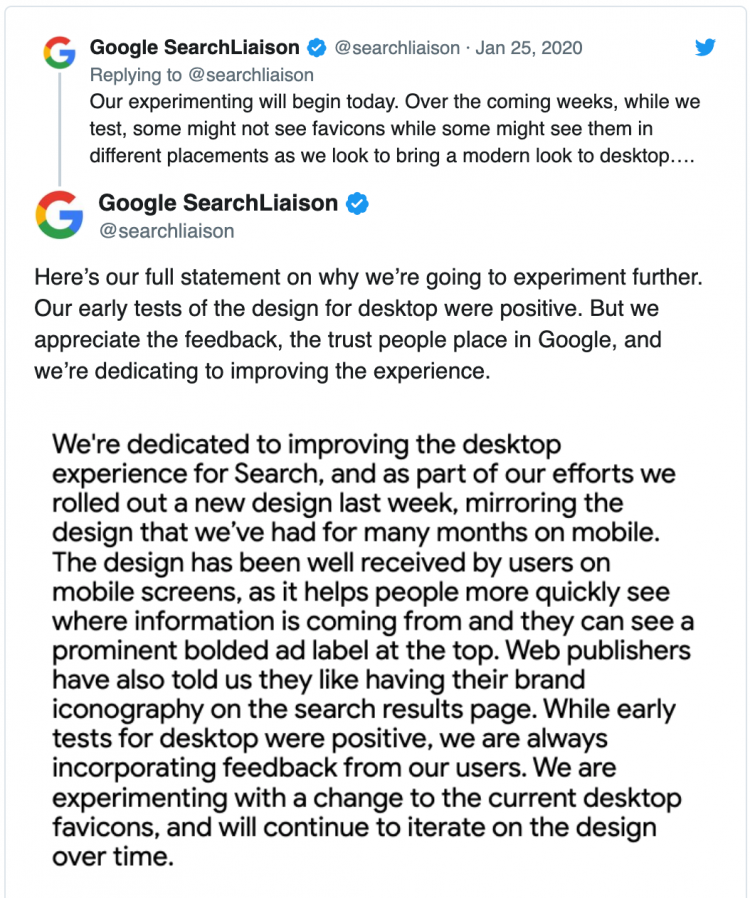
The takeaway for brands and marketers
Your brand in the eyes of the consumer is your business. Any opportunity to include your brand’s visual identity to help differentiate you among your competitors should be seen as a win.
If your customers relate to your brand, then having your logo displayed in search results will only help to attract them to the right place. However, if your brand does not hold up against your competitors, they will be drawn elsewhere.
This is why the brand is so important to get right. Ensuring the perception of your brand in the market is positive, and that people recognise it, remember it, and have an emotional connection to what it stands for will ensure you are chosen over your competitors.
Since this is a relatively new change, there’s little data available on how this change can be further leveraged for a stronger search engine performance. We’re likely to see the favicon given much more consideration in the coming months as search engine optimisers (and brands) explore how the favicon influences click-through-rates and visibility. What was once a relatively insignificant part of the search engine optimisation process could grow to become a meaningful factor.Given that Google has retained favicons in mobile design and is continuing their experimentation for desktop, it’s worth ensuring that your site has a branded favicon nominated for Google to pull into search results. Find Google’s guide on how to do this here.

